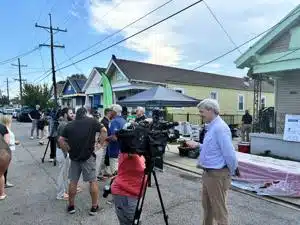(The Center Square) – Over the first 100 days in his second term of office, President Donald Trump has signed five pieces of legislation into law, fulfilling some of his deregulation and immigration promises while preventing a government shutdown.
“The four words that best describe this administration so far are ‘promises made, promises kept,’ House Speaker Mike Johnson, R-La., told reporters Tuesday. “We’re just getting started, and that’s one of the reasons we’re so excited.”
Trump signed the first bill to hit his desk, the bipartisan Laken Riley Act, nine days after taking office and declaring an invasion at the southwest border.
Immigration officers can now detain for deportation any migrants residing illegally in the U.S. who are arrested for theft, assaulting law enforcement, or causing serious injury or death to another person. States can also sue federal officials who violate or refuse to enforce immigration law.
Many Democratic lawmakers opposed the bill because it applies mandatory detention statutes on people who are charged with, and not convicted of, committing crimes.
Trump’s aggressive approach to immigration and border security have resulted in record low illegal border crossings, down from record-highs under the previous administration.
In March, the Republican-controlled 119th Congress sent two energy-related resolutions to Trump’s desk.
One repealed a Biden-era fee on methane emissions before it could take effect. Republicans had said the Waste Emissions Charge, authorized by the 2022 Inflation Reduction Act, was the equivalent of a natural gas tax.
The second resolution rescinded a rule requiring extra archeological reports from operators managing oil and gas development on the Outer Continental Shelf, a measure meant to protect aquatic environments.
Trump also signed and played a major role in the passage of the six-month Continuing Resolution, preventing a government shutdown by maintaining current funding levels for the rest of the fiscal year, which ends in October.
The president repeatedly cajoled and pressured Republican holdouts to support the bill, despite it being the third time Congress punted the deadline to pass the 12 annual appropriations bills that provide money for federal agencies to spend on programs each year.
Another deregulation bill, codified in April, struck down a rule placing stricter tax reporting requirements on cryptocurrency brokers.
During his first four years in office, Trump signed more than 780 bills into law, while former president Joe Biden signed more than 630 bills into law.


















































